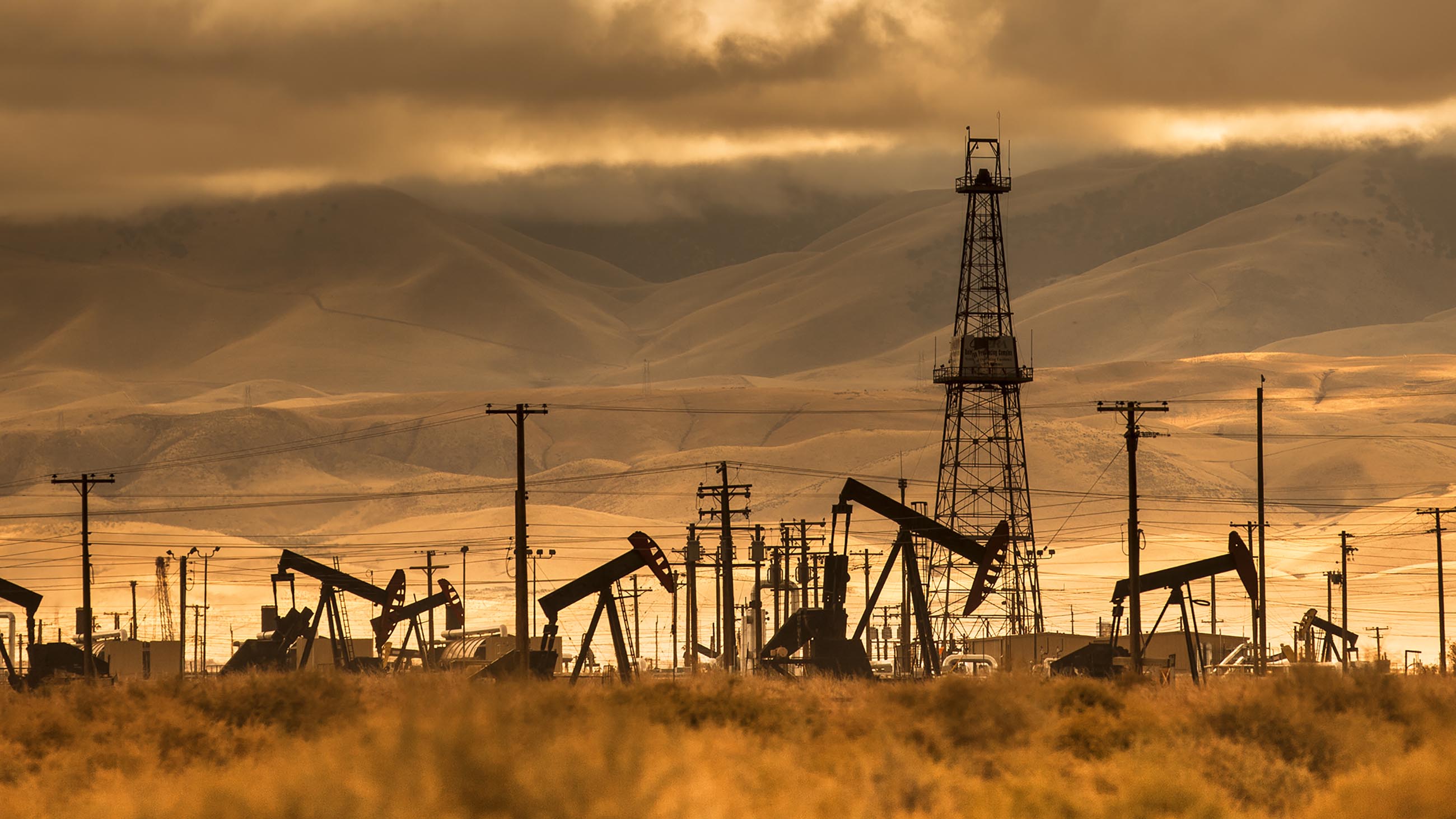To Feed Energy Demand, There Will Be Sprawl
 Energy production in the U.S. will grow by 27 percent over the next quarter century. That infrastructure will need space. (Visual by iStock.com)
Energy production in the U.S. will grow by 27 percent over the next quarter century. That infrastructure will need space. (Visual by iStock.com) Whether under the leadership of Hillary Clinton or Donald Trump, one thing is certain about the future of energy development in the United States: There will be sprawl.
Energy sprawl is an inevitable byproduct of energy production. Solar power arrays, wind farms, farm for biofuels, conventional oil derricks, hydraulic fracturing pads — all of these require space to operate. And according to an analysis published last month by The Nature Conservancy, the Arlington, Virginia-based environmental nonprofit, hundreds of thousands of square miles of land will be affected by both renewable and non-renewable projects as U.S. energy production — destined for both domestic and international markets — grows 27 percent through 2040.
“There will be more solar in deserts, more wind on mountaintops, and for shale gas, huge amounts of places now susceptible to oil and gas development because of hydraulic fracturing,” explains Joe Fargione, director of science for The Nature Conservancy’s North America region and a co-author of the study, which used a combination of aerial imagery and data from permitting agencies, scientific literature, and the federal Energy Information Administration to forecast America’s future energy mix and land requirements.
Oil and gas extraction activities will make up between one quarter and one third of total direct land-use impacts, the authors estimate — the largest share of impacts overall — which isn’t all that surprising. New drilling techniques, after all, are unlocking vast reservoirs of hydrocarbons that were previously unreachable, putting hundreds of thousands of square miles of land that would have been previously unsuitable for oil and gas development potentially in the industry’s crosshairs. About half of the projected energy sprawl will be associated with coal mining, the authors found — mostly surface coal mined through mountaintop removal — with biofuels and a mix of renewables accounting for the rest.
Of course, all of the land that is theoretically suitable for energy development won’t see a bulldozer within the study’s timeframe. For starters, pushback from not-in-my-backyard protests are sure to continue as domestic energy production grows, and energy developers – whether their endeavors are renewable or non-renewable – are increasingly familiar with protests — including one that has drawn hundreds of people to North Dakota.
Public resistance notwithstanding, the nation’s energy production capacity is expected to grow by 27 percent over the next quarter century, and that growth could see as much 77,000 square miles of new land given over to energy infrastructure, the recent study suggests. What’s more, spacing needs for energy projects extend well beyond the direct footprint of any single fracking pad or wind turbine. As the authors explain:
[W]ind turbines are commonly spaced four rotor diameter widths apart from side to side and 10 rotor widths apart from front to back, to minimize turbulence that affects energy production, Thus, only about 3 percent of a wind development is directly impacted by turbines, roads and operations facilities, but the total area required includes the land in between the turbines.
Combine it all — the direct and indirect spacing needs — and the authors estimate that, depending on the market price for various fuels, total new land requirements for U.S. energy infrastructure could reach well over 300,000 square miles by 2040.
That’s an area roughly the size of Texas.
And lest anyone feel compelled to point the finger solely at fossil fuel industry for its lion’s share of the impacts, the authors make clear that the energy calculus is a tricky one. Biofuels, for example — including products like ethanol, biodiesel, and other liquid fuels made from plant matter — will continue to drive agricultural expansion. “In total, between 2007 and 2040, biofuels could impact an area the size of Virginia,” the study notes. Further, when measured by the amount of energy produced for a given piece of land, renewable energy of all kinds “generally has a greater direct footprint than extractive energy” — at least in the short term, the authors note.
That comes as no surprise to William Schlesinger, president emeritus of the Cary Institute of Ecosystem Studies. “The hidden side of renewable energy is often the amount of land that it takes to implement it,” Schlesinger wrote in an email to Undark, pointing to a post he had written on the matter of energy sprawl last March: “Renewables have many advantages,” Schlesinger noted, “but lessening the impact of energy provision on natural habitat does not appear to be among them.”
Of course, that impact differential becomes less pronounced with the fullness of time. After all, renewable infrastructure, be it a solar array, a wind farm, or a crop of corn destined for ethanol production, continues to produce energy year after year on that same plot. The fossil fuel industry, in contrast, must continually “expand [its] footprint to acquire additional resources as wells dry up and mines are depleted,” the authors of the recent study note.
So in a nutshell: The U.S. is going to be making more energy, more land will be needed to do it, and the math is both complicated and worrying. That’s particularly true for conservationists like Fargione, who suggests that a lot of desert tortoises, golden eagles, and other species will see their habitats fragmented or destroyed if energy developers and regulators aren’t careful. That’s why he and his fellow authors have offered up a few recommendations for how best to site new energy projects — strategies like avoiding the last remaining habitats for certain iconic species, clustering new energy infrastructure around existing energy infrastructure, and incorporating energy production into the already-built environment (think rooftop solar and the like).
Another recommendation: Improve energy efficiency, so that less energy is needed overall.
“Switching to compact fluorescent or LED light bulbs can help,” Fargione said. “If everyone in the United States switched to compact fluorescents, we could reduce 2.5 percent of our total electricity demand.”










